Growing Great Brassicas in Alaska
HGA-00048 View this publication in PDF form to print or download.
by Darren Snyder
Brassicas belong to a large, well-known and important family (Brassicaceae) of cultivated plants that are excellent for Alaska growing conditions. Many gardeners and commercial growers appreciate them for their excellent nutritional value and because they grow well in the cool (average temperature in the 60s), long days of Alaska’s short summer season. Most of the familiar and widely cultivated members of the family belong to the genus Brassica, including Brassica oleracea (cabbage, savoy cabbage, broccoli, Romanesco broccoli, cauliflower, Brussels sprouts, collards, kohlrabi and kale), B. rapa (turnip, bok choy/pak choi, Chinese cabbage), B. napus (rutabaga), B. rapa/napus (canola/rapeseed), B. juncea (leaf mustards) and B. rosularius (tatsoi). Other genera of Brassicaceae grown in Alaska include Armoracia (horse radish), Rorippa (watercress), Eruca (arugula) and Raphanus (radish, daikon).
Among brassicas, we can consume every part of the plant including roots, stems, leaves, buds, flowers and seeds (oil). Alaska brassicas not only taste great, they are also highly nutritious, with high levels of vitamin C and other nutrients. They have even been linked to reducing the incidence of cancer.
Because the species are very closely related, cross breeding between certain groups has resulted in novelty crops such as “flowering sprouts,” purple kalelike buds growing on a Brussels sprouts-like stalk, and the beautiful Romanesco broccoli, which has ever-impressive, fractal-like flowering heads and can be grown by Alaskans both as a curiosity and as a commercial crop.
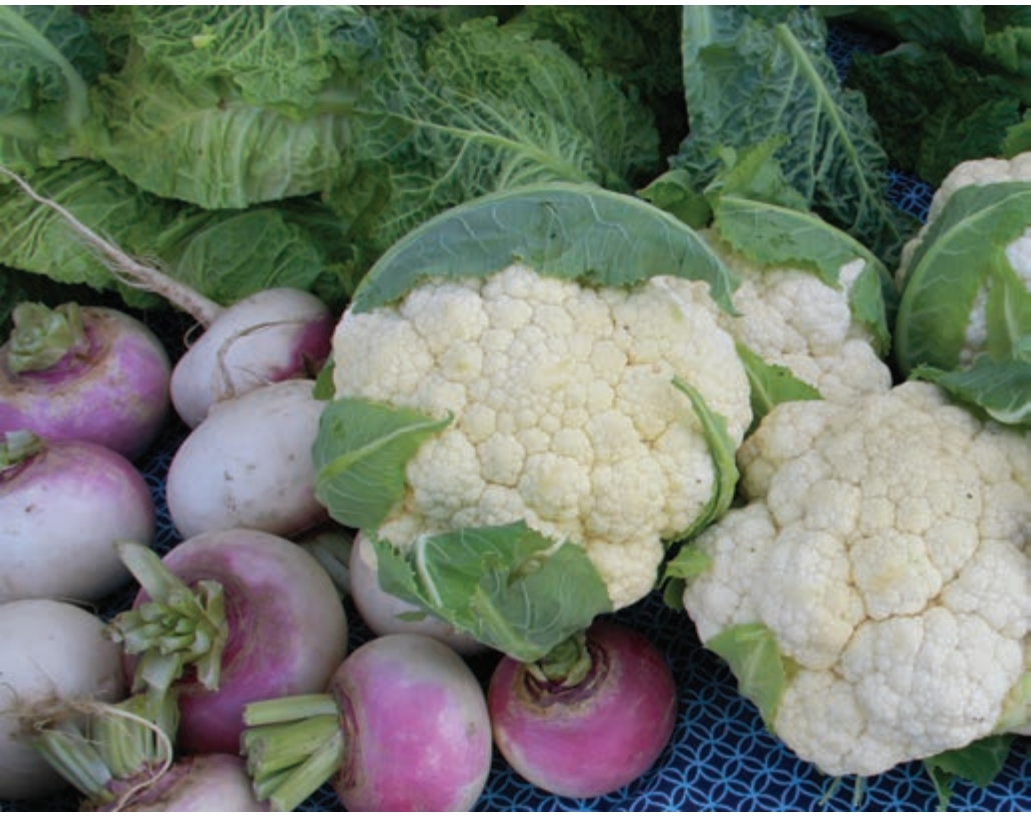
Growing brassicas in Alaska should not be considered a guaranteed success, but decades of trial, error, breeding and selection have created a great potential for a bountiful harvest if some basic care is taken when preparing the garden for planting and while caring for these wonderful plants.
Cultivating Brassicas
Preferred Soil Conditions: Brassicas prefer well-drained, highly organic soils — 6.0-6.8 pH (mineral soils) and 5.6 (organic soils).
Soil Preparation: Raised beds and good drainage are generally considered necessary to keep the roots well aerated and allow for heating of the soil by the sun, especially if beds are oriented north/south. Proper pH needs to be attained and maintained through liming, preferably in the fall.
Brassicas are generally heavy feeders so applications of manure, compost, seaweed (if available), other organic fertilizers and nonorganic fertilizers can help provide necessary nutrients. Actual application rates should be determined by conducting a soil analysis through a certified lab; your district Cooperative Extension Service agriculture and horticulture agent can help you interpret the results. If you are unable to have a soil analysis done, the general application rate is 2-3 pounds of 8-32-16 per 100 square feet of soil. If using organic or homemade fertilizers, refer to UAF Cooperative Extension Service publication HGA-00338, Soil and Fertilizer Management for Healthy Gardens, to determine application rates.
Direct Seeding: Kale, kohlrabi, mustard, radishes, rutabagas, parsnips and turnips can be direct seeded up to two weeks before the last killing frost.
Seed Starting and Transplanting: Start seeds indoors to get a head start on the season with most of the large brassicas (not rutabagas, turnips or radishes). Brussels sprouts require seeding 6-8 weeks before transplanting while most other brassicas (broccoli, cauliflower, kale and cabbage) do well in the 4-6 week range. Larger plants are nice to plant out in the garden, but older starts will generally have a harder time adapting to the outside environment if they are surprised by a cold snap. For this reason, always harden off your starts by putting them out for an hour a day at first, then adding an hour each day for about a week until you build up their hardiness. Another important practice, especially with the cole crops, is to keep the temperatures low if possible (45-55°F), balance the light (turn regularly if in a window) and provide a slight breeze (from a fan) while the seedlings are growing so that they grow stout and balanced, not leggy and spindly. Covering transplants with woven fabric as a floating row cover can protect them from minor cold snaps and wind, which can easily dry out transplants, especially if they have had any root trauma.
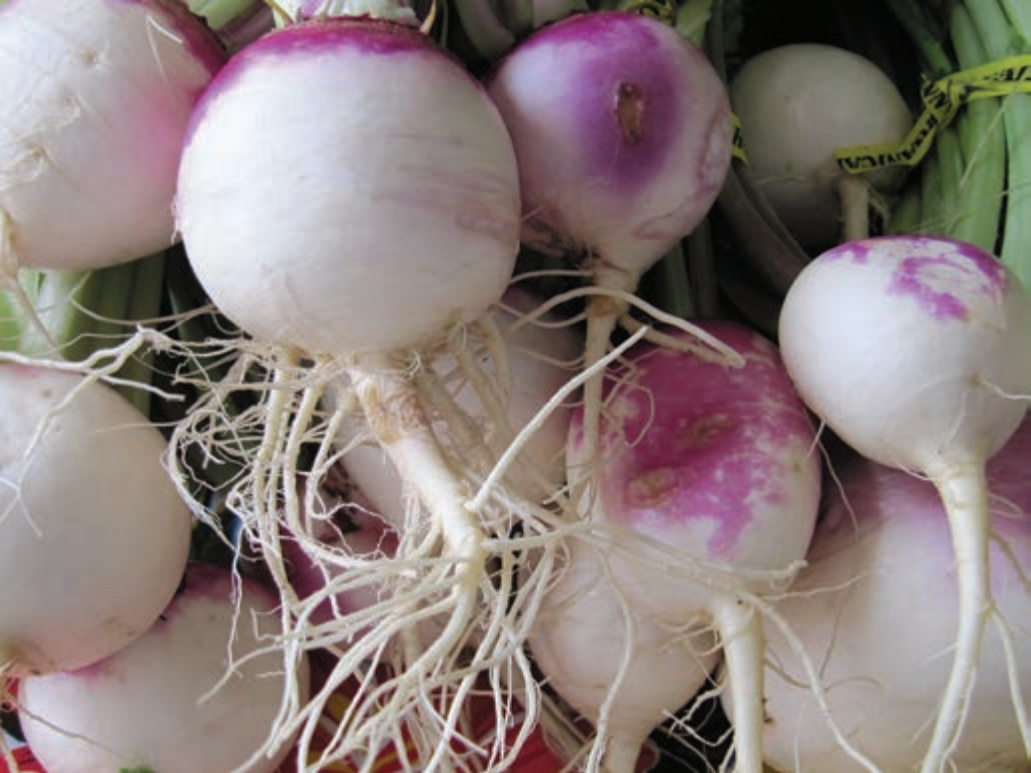
Watering and Fertilizing: Consistent watering at the seedling stage is vital, but it is also necessary throughout the growing season. Plant brassicas in well-developed and prepared/fertilized soil and side dress or foliar feed them during the season. High-nitrogen fertilizers are recommended for mid-season side dressing for all brassicas except the edible roots. Micronutrients are vital to good plant growth. Unfortunately, Southcentral and Interior Alaska have seen brassicas with both boron and molybdenum deficiencies. Symptoms of boron deficiency include thinning and tearing leaves and hollowed stems. Molybdenum deficiency can cause whiptail, which causes broccoli and cauliflower leaves to curl and deform. Methods for addressing these deficiencies can be found in Cooperative Extension Service publication HGA-00134, 16 Easy Steps to Gardening in Alaska.
Thinning and Spacing: Thin and space according to seed package instructions, specific growing goals or the following general guidelines: broccoli (18-24 inches), cabbage (18-24 inches), cauliflower (18 inches), Brussels sprouts (24 inches), kohlrabi (4-10 inches), kale (10-12 inches), turnip (3-5 inches), rutabaga (4-6 inches), parsnip (3 inches), Chinese cabbage (18 inches), radish (1 inch), mustard greens (6 inches), pak choi (8-10 inches), tatsoi (6-8 inches), collards (10 inches), watercress (see side note), arugula (1 inch).
This perennial plant can be aggressive and quite a challenge to remove from the garden. After a couple of years of not harvesting the roots, plants can grow to over 2 feet in diameter and it can be tough to get all the roots out at that point. The smallest piece can sprout to a new plant. So, just keep track of your plant’s growth and if you don’t end up eating it, take it out when it is small. Or better yet, find someone to gift with fresh or dried horseradish!
For more information on specific characteristics of brassicas, refer to 16 Easy Steps to Gardening in Alaska.
Diseases and Pests
Diseases of note that can affect Alaska brassicas include clubroot, fusarium wilt and black rot. General management practices to reduce brassica diseases include planting resistant varieties if possible, keeping equipment clean, rotating brassicas with non-brassica plants and preventing contamination between garden/growing areas.
The most threatening disease to Alaska brassicas is clubroot (Plasmodiophora brassicae). If you notice there is a problem — usually wilting on a dry day even though a plant is well watered — lift the plant out of the ground to expose the root system. Instead of robust, fibrous feeder or healthy storage/ tap roots, you will see large, stubby, distorted “clubs” ranging in size from a finger’s width to up to 5 inches in diameter. This persistent fungus, which produces viable spores that last in soil up to 18 years, is especially adapted to infect brassicas of all types. To reduce the chance of your brassicas getting clubroot, do not accept plants from other gardens unless you are sure they are not infected and clean your tools when going from one garden area to another.
If you have clubroot (1) don’t plant brassicas in the infected area if possible, (2) prevent its spread by trashing or burning infected material — DO NOT compost it, (3) keep soil pH near or above neutral, (4) do not transport soil from the infected area on shoes, tools or machines and (5) prevent surface water from flowing or splashing from an infected area to a non-infected area. These are only a few of the practices recommended for dealing with this frustrating disease. For more information on clubroot, ask your district Cooperative Extension Service agent.
Root Maggots — Adult root maggots are flies that lay eggs near the base of brassicas. The eggs hatch into larvae (up to 100 per adult), which work their way down the stem to the roots and eat the roots. This stunts and may even kill the plant, depending on plant stage, size and condition. Care should be taken even in the seedling stage as adult root maggot flies will lay eggs while seedlings are in trays and you may unknowingly transplant a batch of eggs along with your precious plants. Root maggots attack turnips, radishes, cabbage, cauliflower, broccoli, Brussels sprouts and rutabagas from late May throughout the summer. For more information, see Cooperative Extension Service publication PMC-00330, Root Maggots in Alaska Home Gardens.
Cutworms — Cutworms are also of concern for brassica growers. These small, night-flying moths lay their eggs on plant leaves, where they hatch to larvae. The larvae wrap themselves around the base of the starts at night and cut the plant off, leaving just a stub above ground and the rest laying there to shrivel up the next day. To protect from cutworms the standard practice is to collar the plant with a little metal ring (aluminum can or other) that is set ½ inch into the soil and about an inch above ground. If you notice any damage and are motivated, you can go out the next night and catch them in action.
While you are out there, look for our other pest of concern, slugs; pick them off and drop them in a bucket of one-half water and one-half ammonia, or skewer them on a bamboo stick to keep your hands or gloves from getting slimy. Spraying with the same solution of one-half water and one-half ammonia also kills slugs with little effort.
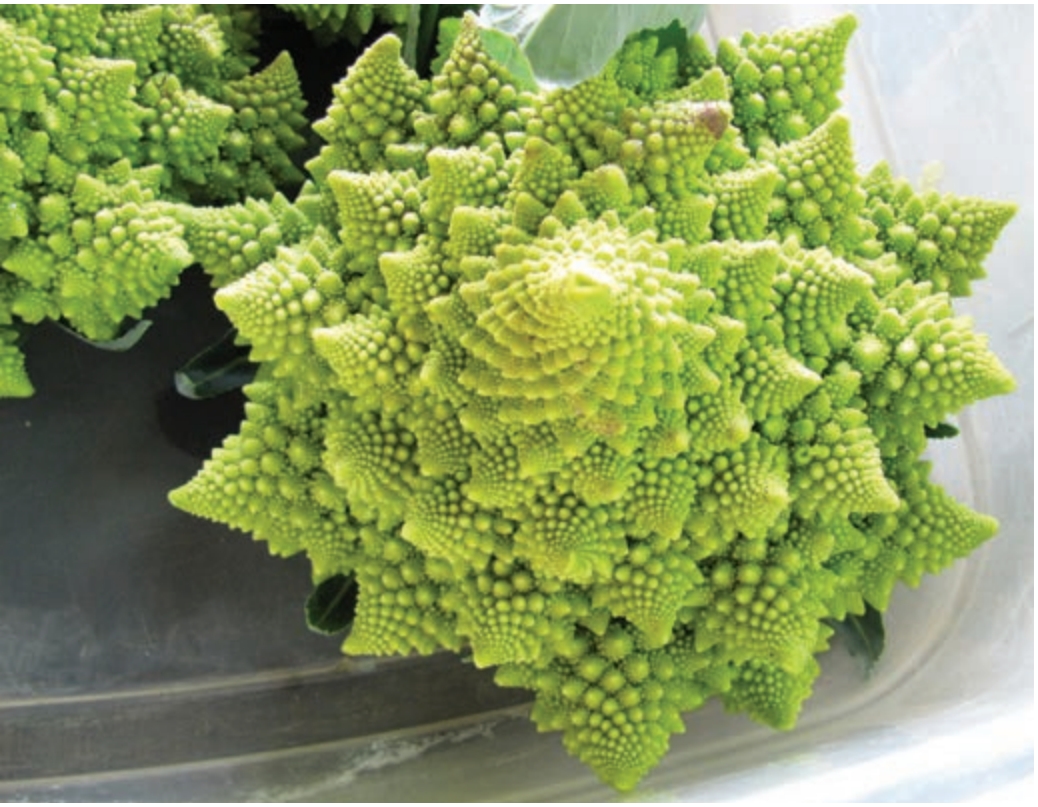
Other slug control options include setting out a tray of old, cheap beer or other deadly attractant. A 16-ounce plastic water bottle with some beer in it and laid on its side or a lidded pint-size food container with a few holes punched in the sides will help keep water out and invite the slugs in if the entries are at soil level. Beer traps need to be refreshed every three days and, though they do kill slugs, shouldn’t be relied upon as a primary control option unless spaced every few feet. The same containers can help keep iron phosphate pellets (brand name Sluggo) dry. Iron phosphate pellets are certified for organic use, are not harmful to humans or animals, and work by causing the slugs to stop feeding. For more information, see Cooperative Extension Service publication PMC-10070, Slugs.
Especially for Alaska
Giant cabbages in Alaska? You betcha! Growing giant cabbages is an extreme Alaskan sport.
- If you want to beat the current world record of an 138¼-pound cabbage, you have two varieties to choose from: the O-S Cross and Great Northern. One thing to be aware of is that because of high genetic variability, some of the O-S cross varieties only produce large leaves, not cabbage heads. So make sure to plant more than one, unless there is a prize for the largest cabbage leaf.
- Plant early. The champion growers start their giants on January 1 or earlier.
- Plant into a liftable frame for ease of cutting and transporting to scales at the contest/fair.
- Use some kind of irrigation system, such as perforated PVC pipe, to get fertilized water to the roots.
Canola or rapeseed (B. rapa, B. napus) is being grown in Alaska and deserves mention here because it shows promise as a biofuel crop, an edible oil crop and animal feed. It has been studied since the mid-1970s and is still of interest to Alaska growers. To learn more about cultivation and processing techniques, contact the University of Alaska Institute of Agriculture, Natural Resources & Extension.
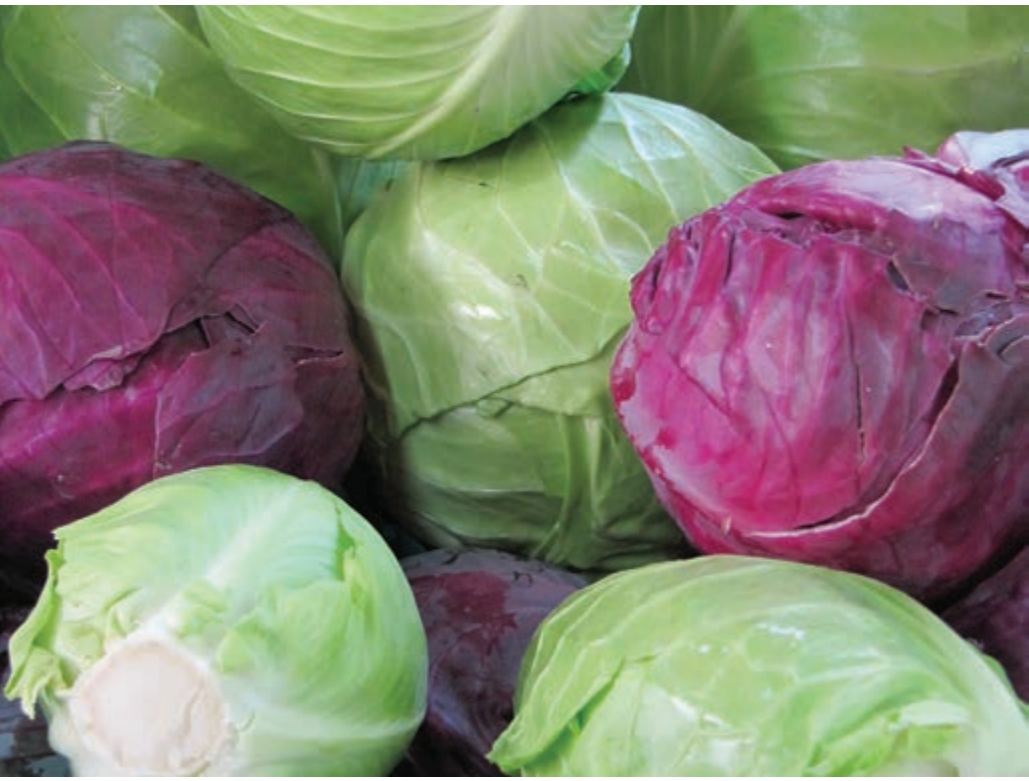
Wasabi — another potential brassica for Alaska? As our coastal northwest neighbors in British Columbia and Washington State are already aware, there is a high demand for this high-value crop. In spite of wasabi’s special growing needs, either in gravel-bottomed submerged beds or under conifer rainforest canopies, producers have been gearing up and expanding production since the early 2000s. The B.C. growers have the support of Canadian government researchers, who apparently are tight-lipped about their methods in this highly competitive industry.
Watercress grows so successfully in Alaska that it can do so without our help and it naturalizes as an invasive species. This delicious and nutritious plant has been observed in Alaska waterways, where it has the potential to alter the natural environment, affecting native Alaska flora and fauna. If you grow watercress, take special care not to let plant parts or seeds escape from your garden. To grow this plant, simply start seed as you would any other brassica, transplant into garden beds and keep moist. If you have the time and energy, create your own mini garden creek bed lined with impermeable material such as black plastic and a layer of rocks and pebbles. Allow water to flow through it regularly so the water stays fresh and the roots stay moist. Another option is to create a hydroponic growing basin or tub with floating watercress “islands.” While you are at it, put in a pump and give yourself a little patio water feature that is beautiful, peaceful and packed with nutrients!
Alaska growers have a great resource in the brassica family. Brassicas are able to reliably provide an abundant harvest throughout the season from early greens such as baby kale and tatsoi to some of our favorite storage vegetables, such as cabbage, rutabagas and turnips. There are many new varieties to try and many old standbys. In fact, if you have the desire, you could even breed your own favorite. Enjoy those cole crops, Alaska!
Preparing and Cooking Brassicas
By Sarah R-P Lewis, Extension Faculty, Family and Community Development
There are many vegetables, roots and greens to choose from in the brassica family and many easy ways to prepare, cook and preserve them. If you are new to one of the brassicas, start with simple cooking techniques or recipes to find ones that appeal to your taste and can be regularly added to your menu.
Don’t wash brassicas (leaves, heads, stems or roots) until you’re ready to use them.
Head varieties: cabbage, Brussels sprouts, Chinese cabbage
Preparation: salads/slaws, steamed, braised, stir-fried, pickled/fermented
Easy Favorite Coleslaw
Whisk together 2 tablespoons white vinegar or lemon juice, 1 tablespoon olive oil, 1½ teaspoons mustard, ⅛ to ½ cup sugar or honey, ¼ teaspoon salt and ¼ teaspoon celery seeds in a bowl. Add 5 cups of any combination of shredded cabbage (red, green or Chinese), Brussels sprouts and/or carrots, chopped onion and green pepper. Toss all together and chill until serving. Top with freshly ground pepper to taste.
Florets: broccoli, cauliflower
Preparation: raw, salads/slaws, steamed, blanched, roasted, pickled/fermented
Pickled Cauliflower or Brussels Sprouts
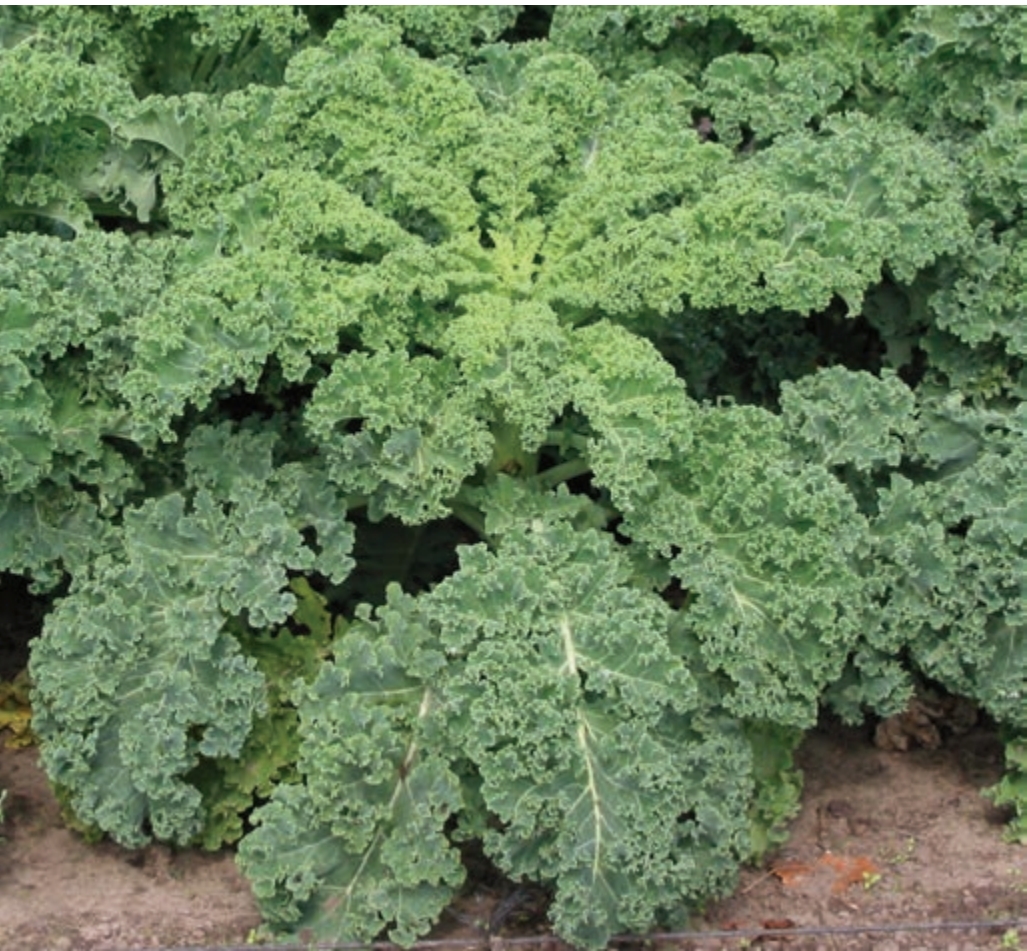
Wash 12 cups of 1- to 2-inch cauliflower florets or small Brussels sprouts; remove stems and blemished outer leaves. Boil for 4 minutes in salt water (4 teaspoons canning salt per gallon). Drain and cool. Combine 4 cups of 5 percent white vinegar, 2 cups sugar, 2 cups thinly sliced onions, 1 cup diced sweet red peppers, 2 tablespoons mustard seed, 1 tablespoon celery seed, 1 teaspoon turmeric and 1 teaspoon hot red pepper flakes in a large saucepan. Bring to a boil and simmer 5 minutes. Distribute onion and diced peppers among nine half-pint jars. Fill jars with brassica pieces and pickling solution, leaving ½ inch headspace. Refrigerate or process for 10 minutes in a boiling water bath canner.
Hearty leaves: collards, kale, mustard greens, kohlrabi leaves
Preparation: salads, braised, sautéed, stir-fried, soups, chips
Balsamic Braised Brassica Greens
Cut the ends off 1 to 2 bunches of leaves; rinse whole leaves in a colander and drip dry only. Heat 1 tablespoon olive oil over medium-high heat in a large sauté pan. Add 2 to 3 cloves of garlic, sliced, and cook until garlic starts to brown. Reduce heat to medium, add wet greens to pan and quickly cover. Add 2 to 3 tablespoons balsamic vinegar to pan and cover again. Braise for 3 minutes. Turn the greens with tongs and cook 3 more minutes. Put cooked greens in a serving bowl, pour pan liquid and garlic over greens and sprinkle with kosher salt and pepper to taste.
Tender leaves: pak choi, tatsoi, watercress
Preparation: salads, steamed, stir-fried
Sauteed Asian Greens
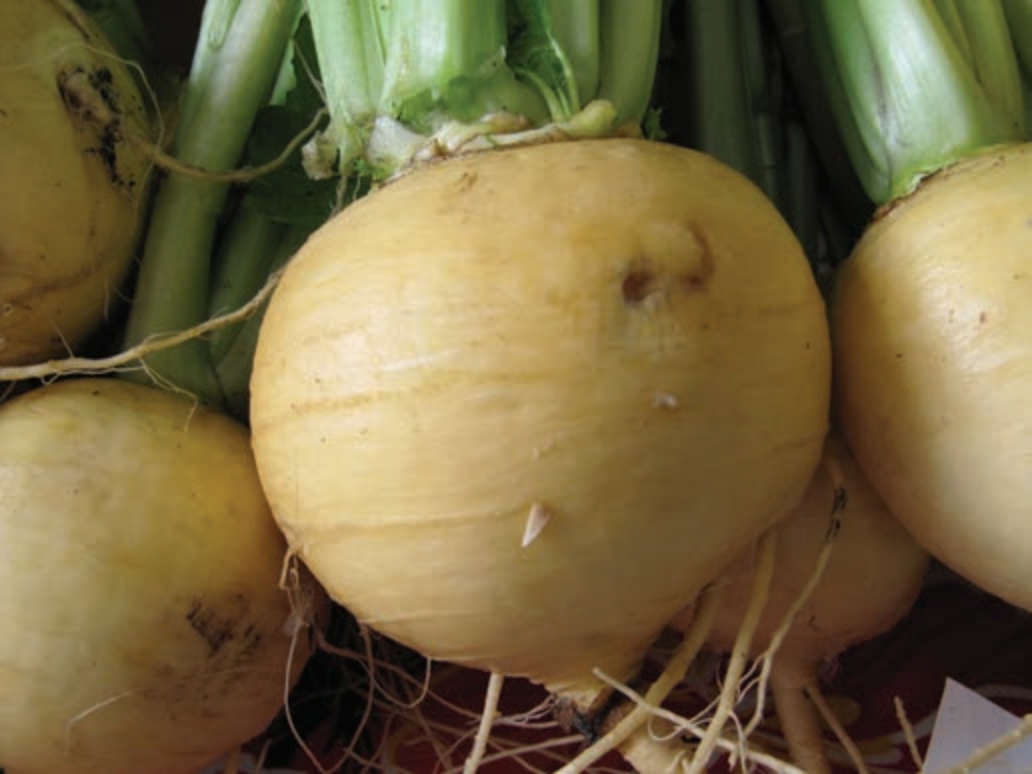
Add 1 to 2 tablespoons coconut oil to a large, medium-hot frying pan. Add 1 sliced red bell pepper, 1 sliced shallot and 1 clove garlic, minced, to the oil and sauté until garlic is fragrant. Reduce heat to medium-low and add 4 to 5 cups washed and dried whole tatsoi and/or baby pak choi leaves. Stir pan, cover and cook 3 to 5 minutes, until leaves are bright green and have begun to wilt. Serve with lemon wedges, kosher salt and pepper to taste.
Mild stems and roots: kohlrabi, turnip, parsnip, rutabaga
Preparation: raw, salads, steamed, sautéed, baked, boiled, pickled/fermented
Crunchy Roots and Ranch Dip
Wash kohlrabi and/or turnip bulbs (peel if large and woody); cut into large sticks. Combine 2 tablespoons dried parsley, 1 teaspoon dried dill, 1 teaspoon garlic powder, 1 teaspoon onion powder, ½ teaspoon dried basil and ½ teaspoon pepper in an airtight container. Mix 1 tablespoon of herb mixture in a small bowl (store the remaining mixture in pantry) with ½ cup of sour cream or yogurt. Serve the dip with root sticks and whole grain crackers or pretzels. Also good with steamed broccoli and cauliflower florets.
Spicy roots: radish, wasabi, horseradish
Preparation: raw, flavorings, condiments
Prepared Horseradish
In a well-ventilated room, wash and peel fresh horseradish roots and dice into small cubes. Cover the blades of a blender with crushed ice and/or cold water. Place horseradish cubes in the blender. Process no more than half a container, one load at a time. If necessary, add more water or crushed ice to finish grinding. When done, pour off excess water. When the mixture reaches the desired consistency, add 2 to 3 tablespoons of 5 percent white vinegar or lemon juice and ½ teaspoon salt for each cup of grated horseradish. For milder horseradish, add the vinegar or lemon immediately; for more heat, wait up to 3 minutes before adding. Place mixture in half-pint glass jars and screw lids on firmly. Store in the refrigerator or freezer.
Related UAF Cooperative Extension Service Publications
16 Easy Steps to Gardening in Alaska, HGA-00134
Broccoli, FNH-00561B
Cabbage, FNH-00561C
Kohlrabi, FNH-00561O
Root Maggots in Alaska Home Gardens, PMC-00330
Slugs, PMC-10070
Soil and Fertilizer Management for Healthy Gardens, HGA-00338
Tantalizing Turnips, FNH-00463
Time for a Kale-abration, FNH-00540
Vegetable Storage in Root Cellars, HGA-00331
Recommended Brassicas for Alaska
| Name | Type |
|---|---|
| Broccoli | Packman, Green Comet, Waltham 29, Emperor |
| Brussels sprouts |
Jade Cross, Prince Marvel |
| Cabbage |
Early Jersey, Early Marvel, Emerald Ace, Hybrid Golden Acre, Stonehead, Survivor, O-S Cross, Multikeeper |
| Cauliflower |
Super Snowball, Early Snowball, Snow Crown, Andes |
| Greens |
Collards, Green Wave Mustard, Seven-Top Turnip |
| Kale |
Any (nearly all types do well in all of Alaska) |
| Kohlrabi |
Early Purple Vienna, Early White Vienna |
| Parsnip |
Hollow Crown |
| Radish |
Cherry Belle, Burpee White, Chinese White, Champion |
| Rutabaga |
None sufficiently vetted for recommendation |
| Turnip |
Tokyo Cross, Purple Top White Globe |
| Name | Type |
|---|---|
| Broccoli |
Small Miracle, Belstar, Fiesta, Arcadia, Waltham, Packman |
| Brussels sprouts |
Jade Cross, Dwarf Improved |
| Cabbage |
Early Jersey, Early Marvel, Golden Acre, Stonehead, Derby Day, Early Jersey, Wakefield, Copenhagen Market Early, Earliana, Danish Ballhead, Ruby Ball, Savoy Perfection. Chinese/ Oriental varieties; China Express, Soloist |
| Cauliflower |
Super Snowball, Early Snowball, Snow Crown, Candid Charm, Extra Early Snowball, Cheddar, Grafitti |
| Greens |
Collards (Vates), baby bok choi (pak choi) |
| Kale |
White Russian, Red Russian, Winterbor |
| Kohlrabi |
Early Purple Vienna, Early White Vienna, Grand Duke, Superschmelz (giant type), Kalibri, Kongo |
| Parsnip |
Hollow Crown Improved, All American, Andover, Gladiator |
| Radish |
Cherry Belle, Burpee White, Champion, Salad Rose, French Dressing, Easter Egg II, Early Scarlet Globe, French Breakfast |
| Rutabaga |
Historical varieties = Bangholm Purple Top, Yellow Swedish, Wilhelmsburger |
| Turnip |
Purple Top White Globe, Golden Globe, Hakuri |
| Name | Type |
|---|---|
| Broccoli |
Early Dividend, Marathon, Premium Crop |
| Brussels sprouts |
Jade Cross, Oliver |
| Cabbage |
Deadon, Dynamo, Earliana Hybrid, Glory of Enkuizen, Golden Acre, January King, O-S Cross, Red Express, Ruby Ball, Ruby Perfection, Savoy Ace, Savoy Express, Stonehead, Tobia |
| Cauliflower |
Amazing, Fremont, Minuteman, Snow Crown, White Sails |
| Greens |
Collards (Vates), Komatsuna Summerfest, Tendergreen, Green Wave Mustard |
| Kale |
Red Russian, Toscano, Winterbor |
| Kohlrabi |
Early Purple Vienna, Early White Vienna, Grand Duke, Kolibri |
| Parsnip |
Hollow Crown Improved |
| Radish |
Cherriette, Burpee White, Cherry Belle, Discovery, Easter Egg, Mino Spring, Miyashige, Scarlet Globe, White Icicle |
| Rutabaga |
American Purple Top, Laurentian, Joan |
| Turnip |
Tokyo Cross, Hakurei, Purple Top White Globe |
Thanks to Sarah R-P. Lewis, Extension Faculty, Family and Community Development, for providing recipes and information on cooking and preparing brassicas.
Darren Snyder, Extension Faculty, Agriculture and Horticulture
Revised June 2021
